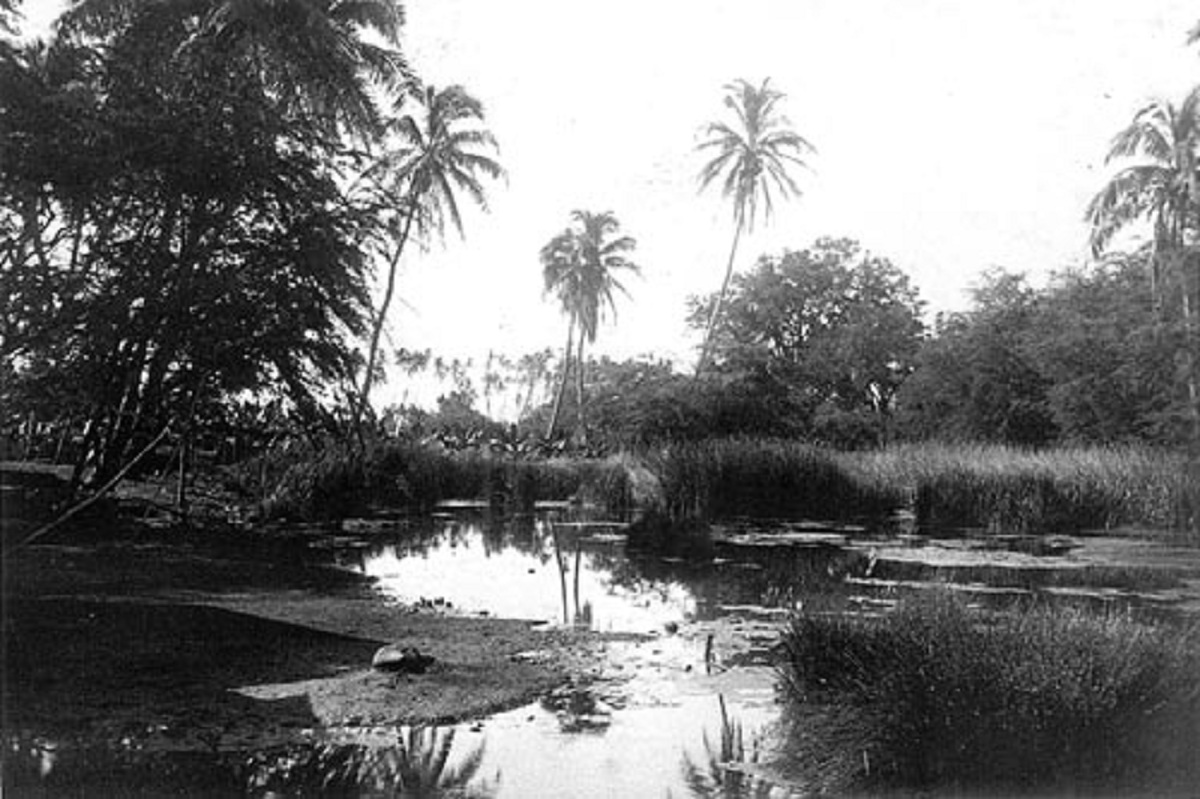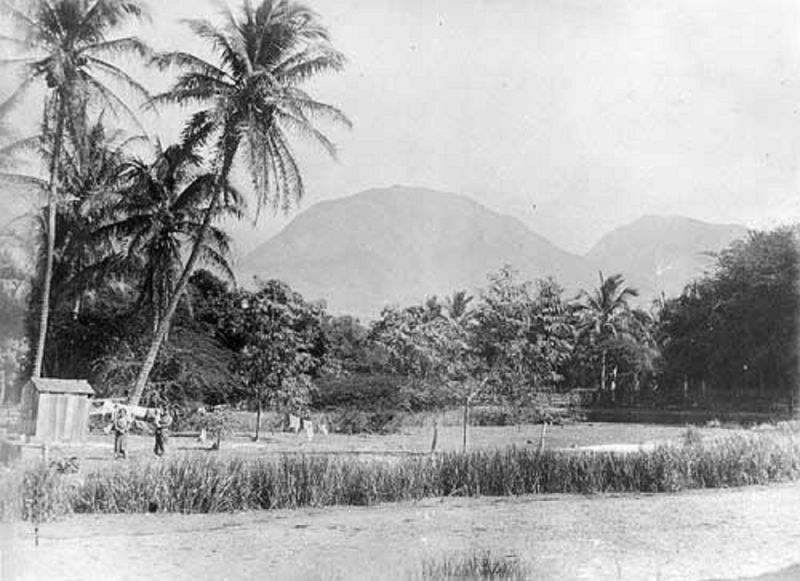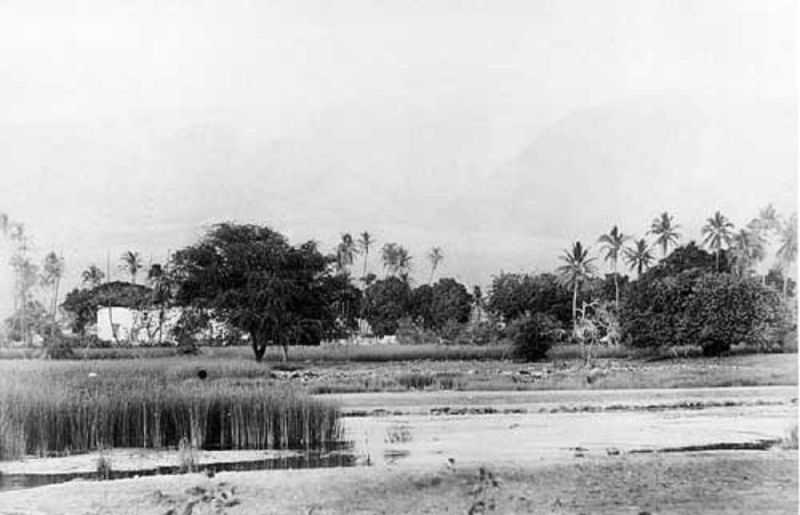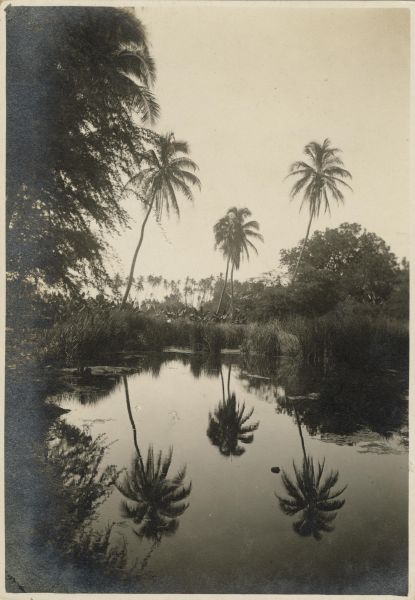Digital Collections
Celebrating the breadth and depth of Hawaiian knowledge. Amplifying Pacific voices of resiliency and hope. Recording the wisdom of past and present to help shape our future.
The heart of old Lahaina is buried under the baseball field, tennis courts, and parking lot of Maluʻuluolele Park on the corner of Shaw Street (old name: Alanui Waiokama) and Front Street (old name: Alanui Mōʻī). Most of the park was once a large pond called Mokuhinia.
In the corner of the pond nearest Waiokama and Mōʻī was a little island named Mokuʻula. Mokuʻula was the residence of many of Hawaiʻi’s most famous chiefs including Liholiho (Kamehameha II) and Kauikeaouli (Kamehameha III). The moʻo goddess Kihawahine lived under this island in a cave called Luaokiha (Kiha’s pit): she protected the royal residents of Mokuʻula and brought fish and good health to the people of Lahaina. When Kamehameha I married the Maui chiefess Keōpūolani, he adopted Kihawahine as one of his gods; she is said to have helped give him the power to conquer Oʻahu and rule the islands.
Descriptions of Mokuʻula at the time of Kamehameha III provide us with the following details: 1) Mokuʻula was connected to Alanui Mōʻī by a narrow pathway; the pathway was guarded by some of the king’s sentries who stood at a little gate; 2) Mokuʻula was shaded by coconut trees; 3) the king lived in two finely-made thatched houses; 4) between the two houses was a smaller thatched building — a mausoleum — that held the bones of Keōpūolani (the king’s mother), Liholiho and Kamāmalu (his brother and his sister-in-law), and Nāhiʻenaʻena (his sister).
In the early 20th century, Mokuhinia pond began to shrink as Maui sugar companies took more and more water from Lahaina’s streams to irrigate the surrounding cane fields. By 1918 there was no pond left: Mokuhinia was filled and Mokuʻula was leveled.
source:
Kīhei de Silva, ʻO Maui nō ka ʻOi - Hālau Mōhala ʻIlima


photo ca.1890. courtesy of: Bernice Pauahi Bishop Museum

photo ca.1893. courtesy of: Bernice Pauahi Bishop Museum

courtesy of: Hawaiʻi State Archives